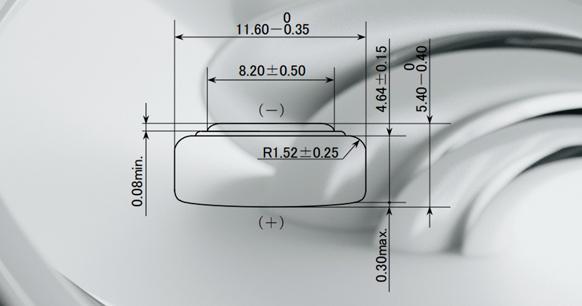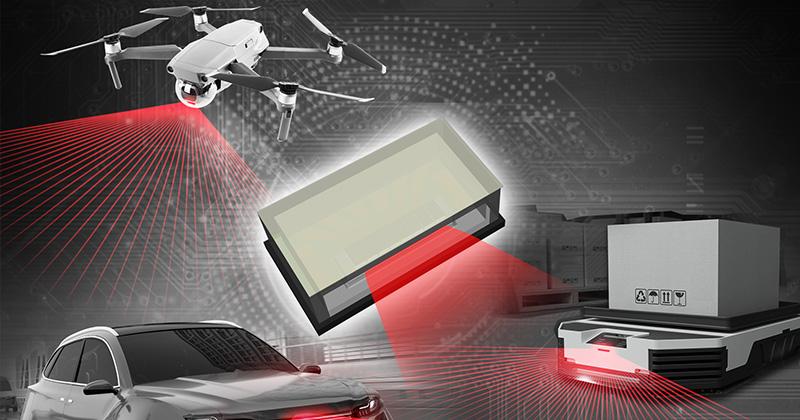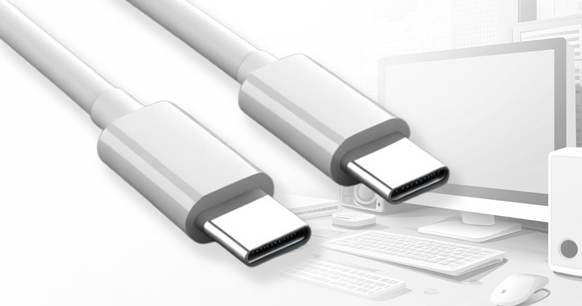
Comprehensive Guide to LR44 Batteries: Features, Applications, and Comparisons in 2024
The LR44 battery is a common button/coin cell battery utilized in a diverse array of electronic devices, including toys, remote controls, watches, calculators, and more. LR44 batteries are available in a variety of chemistries, each with unique characteristics that are critical for their intended applications. In addition, we have a vast inventory of semiconductors, capacitors, resistors, and ICs. We welcome your request for quotation.
Shop Talk - Digital Calipers and SR44 vs LR44 Batteries!
IR44 Battery Introduction
Batteries are an essential component in our daily lives. Batteries are a ubiquitous necessity in both the home and the workplace. Batteries are a ubiquitous component of modern life, powering everything from laptops and wristwatches to torches, smartphones, and even automobiles. Consequently, if you have a number of portable devices or gadgets, it is likely that they are powered by a battery. For instance, LR44 batteries are suitable for use in electronic automobile keys.
LR44 batteries are non-rechargeable, high-performance button cell batteries that are designed to withstand high usage frequencies. This is a single-cell alkaline battery with a nominal voltage of 1.5 volts, a shelf life of 2-5 years, and a capacity of approximately 110 mAh. Despite their reduced lifespan and diminished utility over time, these batteries remain reliable. This battery offers several appealing characteristics, including cost-effectiveness, high compatibility with a range of devices, reliable performance in diverse weather conditions, and availability from a variety of retailers.
What Is an IR44 Battery?
The LR44 battery is a common button/coin cell battery that is used in a wide range of electronic devices, including toys, remote controls, watches, calculators, and so on. It is manufactured by virtually all recognized brands. LR44 batteries come in a variety of chemistries, each with unique characteristics that are typically critical for their applications.
The LR44 battery is an alkaline button cell battery with a long life span. It has a small footprint and a low cost. It is widely available in stores because of the high demand for personal use. The batteries are divided into two categories: premium and regular. The batteries are noted for their endurance, high capacity, high energy density, and reliability due to some of their desirable attributes, including pricing.
The diameter of these batteries is 11.6mm, the weight is roughly 2.5 grams, and the height is 5.4mm. When replacing the batteries in your portable device, double-check facts such as the battery type, measurement dimensions, capacity, maximum voltage or current, shelf life, and chemistry. Because some devices cannot function properly when powered with voltage less than the needed threshold voltage, Silver Oxide batteries can be used to replace LR44 batteries. If an alkaline label appears on a package list, the batteries are alkaline.
Specifications
Murata Electronics LR44 technical specifications, attributes, parameters and parts with similar specifications to Murata Electronics LR44.
|
Type |
Parameter |
|
Factory Lead Time |
12 Weeks |
|
Size/ Dimension |
0.46Dia x 0.21 H 11.6mmx5.4mm |
|
Moisture Sensitivity Level (MSL) |
Not Applicable |
|
Termination Style |
Requires Holder |
|
Battery Chemistry |
Alkaline Manganese Dioxide |
|
Capacity |
120mAh |
|
RoHS Status |
Non-RoHS Compliant |
|
Voltage Rated |
1.5V |
|
Part Status |
Active |
|
Reach Compliance Code |
compliant |
|
Storage/Refrigeration Temperature |
50°F~77°F 10°C~25°C |
|
Battery Cell Size |
Coin 11.6mm |
|
Battery Type |
PRIMARY |
Applications of IR44 Batteries
LR44 batteries are ideal for devices requiring compact and reliable power sources. Common applications include:
l Digital Thermometers
l Calculators
l Flashlights
l Laser Pens
l Security System Control Panels
l Wristwatches
l Medical Instruments
l Application for a Battery Pack
Voltage of LR44 Battery
The nominal voltage of 11.6 x 5.4 mm batteries is dependent on a number of factors, including the battery's particular chemistry, age, storage conditions, discharge conditions, and other variables. The LR44 battery has a nominal voltage of 1.5 volts and a cutoff value of 0.9-1.0 volts. However, it should be noted that the cutoff voltage is dependent on the cutoff voltage of the device in use. Each battery chemistry has its own set of advantages and disadvantages. The choice of battery is dependent on a number of factors, including the device in use, the availability of certain chemistries, personal demands and preferences, and, of course, their costs.
How To Install LR44 Batteries In Your Device
Before beginning, determine the battery's positive and negative ends. The flat side (which may feature markings) of a standard alkaline LR44 battery is typically the positive side. Please note the presence of a small, round protrusion on the opposite side. The aforementioned side is typically the negative end of the spectrum.
Once the positive and negative ends of the battery have been identified, matching markings on the device allow for easy alignment.
Please note that certain devices contain small metallic tabs that assist with battery retention and functionality. It is of the utmost importance to leave these tabs undamaged and in their original state, as any alteration could potentially compromise the functionality of your device.Should you inadvertently displace this tab, you may rectify the situation by meticulously repositioning it.
LR44 Batteries VS Lithium Batteries
The most common types of batteries used as personal power sources are lithium and LR44.While these batteries are primarily used in small portable devices, there are notable differences in their chemical compositions and voltage ranges.The primary differentiating factor between these two battery types is the shorter lifespan of LR44 batteries in comparison to lithium batteries. Please continue reading to learn more about the common differences between these two types of batteries.
Function
LR44 batteries are dry alkaline cells that create power by a chemical reaction involving zinc and manganese oxide. In contrast, lithium batteries use lithium metal or compounds as their anode
Voltage
Lithium batteries produce a higher voltage than alkaline batteries when comparing their voltage and current levels (voltage of 1.75 or more than 1.5V in LR44). Due to their longer shelf life, these batteries offer a competitive advantage
Price
Given that LR44 batteries are less expensive than lithium batteries, they offer a more cost-effective solution.
Effects
Lithium batteries are extremely powerful, which makes them more harmful to the environment and humans. Please dispose of these items with caution. In contrast, LR44 batteries do not contain any heavy metals that could potentially contaminate the soil or cause a ground-fill explosion. Consequently, they are regarded as non-toxic and can be discarded with your regular waste. In any case, it is advisable to adhere to the established disposal procedures when dealing with batteries of any kind.
Weight
It should be noted that LR44 batteries have a higher weight than lithium batteries.
Discharge
Despite having a lower voltage than lithium batteries, LR44 batteries can be used for an extended period. Lithium batteries have a higher capacity than other types of batteries, but they also have a higher self-discharge rate.
Conclusion
We trust that this comprehensive overview of LR44 batteries has provided you with a clear understanding of their applications, similarities, and differences from lithium batteries. After reviewing the aforementioned essay, I am confident that you will be able to differentiate between LR44 batteries and other types of batteries with ease. It is important to compare and examine data on a battery or battery pack to determine whether a different battery can be used as a replacement for the LR44 battery.
Alkaline LR44 Vs. Silver-Oxide SR44 Vs. Zinc-Air PR44 Battery
Alkaline LR44 batteries have a nominal voltage of 1.5 volts, with a cutoff voltage of 0.9-1.0 volts. As the battery is depleted, the output voltage lowers more or less continuously.
LR44 batteries have a nominal capacity of 110-130 mAh, while some LR44 batteries claim to have a substantially higher capacity, comparable to silver-oxide batteries.
The actual capacity is also affected by the cutoff voltage of the devices that are powered by these batteries. Some watches, for instance, have been known to experience dependability issues when the battery voltage falls below 1.2 volts. Silver-oxide SR44 batteries are the optimal choice for powering such devices.
The typical shelf life of an LR44 battery is three years. However, with recent advances in battery chemistry, some LR44 batteries now have a longer shelf life of four to five years.
LR44 batteries are widely available at competitive prices from local hardware stores and online retailers.
Silver-oxide SR44 batteries have a slightly higher nominal voltage of 1.55 volts and a higher cutoff voltage of 1.2 volts in comparison to alkaline LR44 batteries. Upon discharge, the output voltage decreases, but not to the same extent as alkaline LR44 batteries. Consequently, SR44 batteries are the optimal selection for applications that necessitate a relatively consistent output voltage, such as watches and select medical devices.
Silver-oxide batteries have a higher nominal capacity, typically in the 150-200 mAh range, though this may vary depending on discharge currents. Some low-drain types claim to have a capacity of over 200 mAh.
The SR44 battery has an extremely low self-discharge rate. Standard SR44 models have a shelf life of 5-7 years, with some versions having a shelf life of 7-10 years.
While slightly more expensive than LR44 cells, SR44 batteries are the optimal choice for more sensitive equipment such as watches, medical instruments, automobile keys, and other such items.
PR44 batteries, also known as Blue Tab, PR44, or 675 batteries, are zinc-air batteries that are primarily utilized in hearing aid devices.
Zinc-air batteries have a lower starting voltage of 1.4 volts (often also labeled as 1.45 volts) and a cutoff value of 1.2 volts, with a relatively consistent output voltage during discharge.
Zinc-air PR44 batteries have the highest capacity of all chemistries in the 600-700 mAh range, which is approximately three times that of silver-oxide batteries.
However, zinc-oxide batteries have one drawback: their electrolyte is "wet," and they generate power by using oxygen from the air (hence the name "zinc-air"). Prior to use, zinc-air batteries feature a colored tab that must be peeled off, with each battery size having a distinct color tab. Once the tab has been removed, the battery will begin producing voltage/electricity within minutes.
Over time, the battery's electrolyte dries out, which ultimately leads to the battery's demise. Please note that the battery will also cease to function if it is discharged.
Once the tab is removed, zinc-air batteries have a lifespan of a few weeks, although this may vary depending on the battery brand, ambient temperature, and other factors.
Zinc-air batteries, such as PR44, Blue Tab, or 675 batteries, are used in hearing aid devices due to their unique characteristics.
LR44 Battery Safety Concerns
Modern LR44 and other button/coin-cell batteries are manufactured using non-toxic materials that are free of mercury, cadmium, and other heavy metals.
It is also important to note that LR44 batteries are small and may be attractive to children and pets. Ingestion of these batteries can cause electrolysis in the body, leading to the production of highly hazardous chemicals and potential internal burns.
In the event that an LR44 battery or a similar battery is swallowed, please proceed to the nearest emergency room, explain the circumstances, and follow the medical professionals' instructions.
IR44 Battery Dimension

Dimension
IR44 Battery Manufacturer
Murata is a global leader in the design, manufacture, and supply of advanced electronic materials, cutting-edge electronic components, and multi-functional, high-density modules. Murata innovations are utilized in a diverse range of applications, including mobile phones, home appliances, automotive systems, energy management solutions, and healthcare devices.




